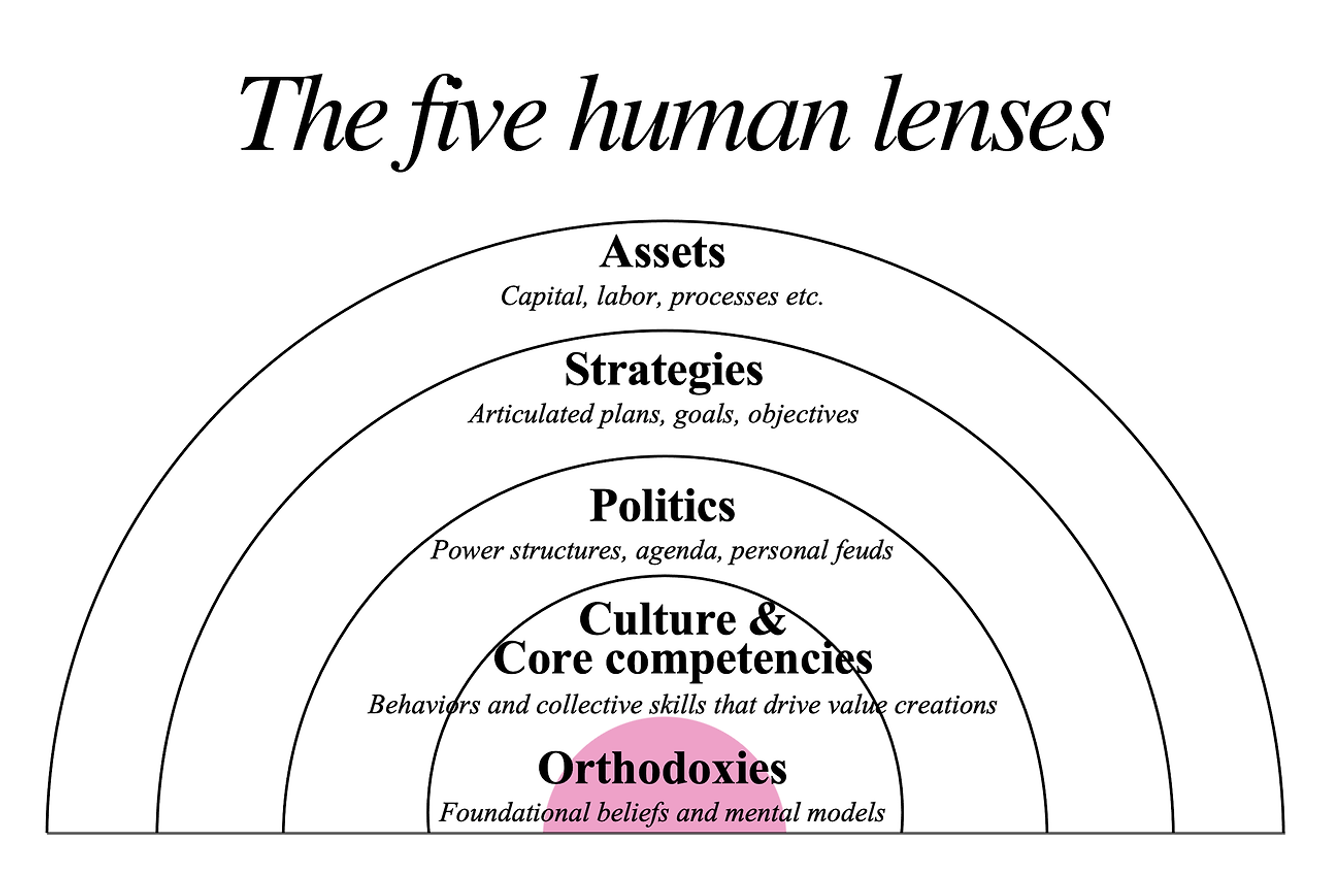
The reason why I still love this image the most is that it greatly helps me judge the appropriateness of conversations during meetings. I stumbled upon this image in materials released by ReD, a Danish consultancy, which I learned about, and it became an interesting summary for identifying the layers and influence of decision-making within an organization.
The actual battleground where discussions about the potential and opportunities of qualitative data take place has, in many cases, been the realm of leaders' awareness and perspectives. Therefore, in each process that helps us see the familiar in a new light and encourages participation in the analysis process so that unfamiliar field-collected data can become familiar, each layer within this image has become a rather persuasive weapon.
- Common belief: If a company that manufactures colored paper has its homepage filled with messages about Korean colored paper culture preceding origami, there might be limitations in leveraging the inherent potential of paper folding, which creates a three-dimensional object from a two-dimensional surface, as a strategic message, given the technological advancements in the industry that popularize 3D avatars.
- Core competency: Focusing on the competency to create tangible value is a crucial decision that directly impacts revenue. It can be a key criterion for identifying individuals within the organization who raise doubts about their roles and determining who needs to be acknowledged and built positive relationships with.
- Power game structure: Ultimately, the success or failure of the role providing insights hinges on the implicit support of the leader who takes responsibility for and drives the process after the project. Whether the final report will be delivered to leaders across the APAC offices or will be scattered like fallen leaves in the wind in front of HQ has often been determined by the level of focus on this aspect.
- Strategy: The term 'strategy' itself is overused or defined differently depending on the role or department, making it a very difficult topic. The one perspective that is understood in almost the same context across various discussions is the summary that it is the sum of all actions taken to move from the reality of 'before' to the reality of 'after'.
Personally, presenting this image felt like a privilege.
A privilege that comes with the irresponsible role of being a third party standing outside the organization.
Comments0